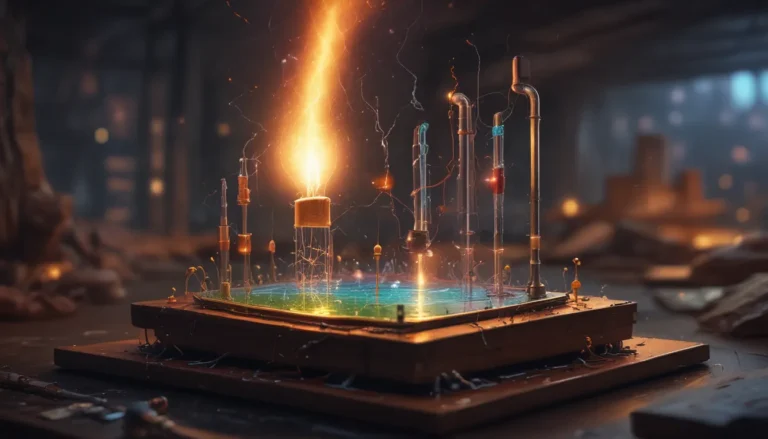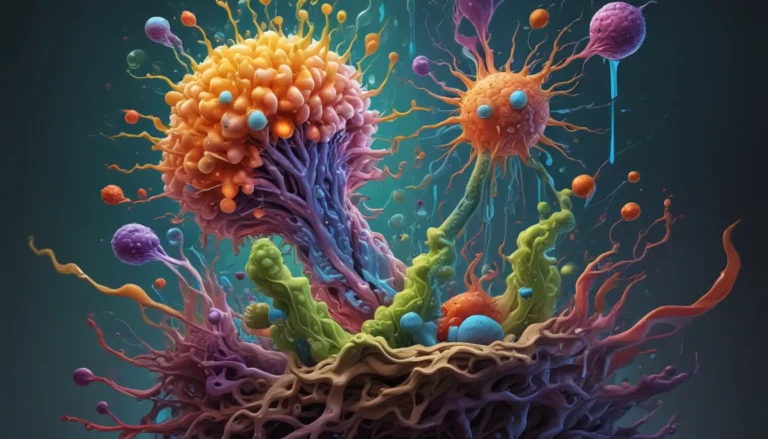A Note About Images: The images used in our articles are for illustration purposes only and may not exactly match the content. They are meant to engage readers, but the text should be relied upon for accurate information.
Krypton, a noble gas with the atomic number 36, is a fascinating element that has captivated scientists and enthusiasts alike. From its unique properties to its diverse applications, krypton holds a significant place in the world of chemistry. Let’s embark on a journey to unravel the mysteries of krypton and gain a deeper understanding of this remarkable element.
Unveiling The Mysteries of Krypton
Krypton belongs to the noble gases group on the periodic table, known for their low reactivity and elemental form. This odorless, colorless, and tasteless gas has various applications, making it a versatile element with unique characteristics.
The Colorful World of Krypton
When an electric current passes through krypton gas, it emits a bright, bluish-white light. This distinct property makes it ideal for use in high-speed photography strobes and certain types of energy-efficient light bulbs, showcasing its versatility in lighting applications.
A Cosmic Origin
Krypton isn’t just a product of Earth but has cosmic origins. Formed through nucleosynthesis in stars, particularly during supernovae explosions, krypton’s fascinating origin adds to its allure and highlights the incredible forces at play in the universe.
Diversity in Isotopes
With six naturally occurring isotopes, krypton is a diverse element with a range of atomic structures. Each isotope has its own unique properties and applications, contributing to the versatility of krypton in scientific and industrial fields.
The Versatile Applications of Krypton
Krypton’s inert nature makes it invaluable in various industrial applications. From lasers to insulating gas in windows and semiconductor production, krypton’s unique properties play a crucial role in enhancing efficiency in industrial processes.
A Breath of Fresh Air
Despite being relatively rare in the Earth’s atmosphere, krypton is present at a concentration of about 1 part per million. Its presence, though minimal, contributes to the composition of the air we breathe, showcasing its role in our environment.
The Hidden Element
Derived from the Greek word “kryptos,” meaning “hidden,” the name “krypton” reflects the element’s tendency to exist in low concentrations and its late discovery compared to other noble gases, adding to its mystique.
Unlocking the Past
The radioactive isotope krypton-81 is utilized in dating ancient groundwater, offering insights into Earth’s hydrological history. By studying the decay of this isotope, scientists can determine the age of groundwater resources with precision.
The Future of Krypton
As technology advances, so do the potential applications of krypton. From medical imaging to ion thrusters in spacecraft, krypton’s versatility continues to be explored, paving the way for innovative advancements in science and technology.
Lighting Up the Future
Krypton is commercially extracted from liquid air through processes like fractional distillation, enabling its use in various industrial and scientific applications. Its presence in space and in advertising signs highlights its widespread applications beyond Earth.
In Conclusion
Krypton is a fascinating element with a rich history and diverse applications. From its discovery to its role in lighting, photography, and medicine, krypton continues to be a valuable asset in various industries. As scientists explore and harness its potential, the future applications of krypton are sure to expand, offering new opportunities for innovation and advancement in technology and science.
FAQs: Unveiling More Insights
- What is the atomic number of krypton?
-
The atomic number of krypton is 36, indicating the number of protons in its nucleus.
-
What is the symbol for krypton?
-
The symbol for krypton is Kr, derived from its Greek name meaning “the hidden one.”
-
What are the common uses of krypton?
-
Krypton is used in lighting, photography, and medicine, along with high-speed photography and energy-efficient windows.
-
Is krypton a rare element?
-
Krypton is relatively rare in the Earth’s atmosphere but is obtained through the process of fractional distillation of liquid air.
-
What are the unique properties of krypton?
- Krypton is colorless, odorless, tasteless, inert, and emits high light, making it valuable in various applications.
Explore the fascinating world of krypton and unlock the mysteries of this enigmatic element. Trust in our commitment to delivering credible and engaging content as you delve into the diverse applications and unique properties of krypton. Happy exploring!






